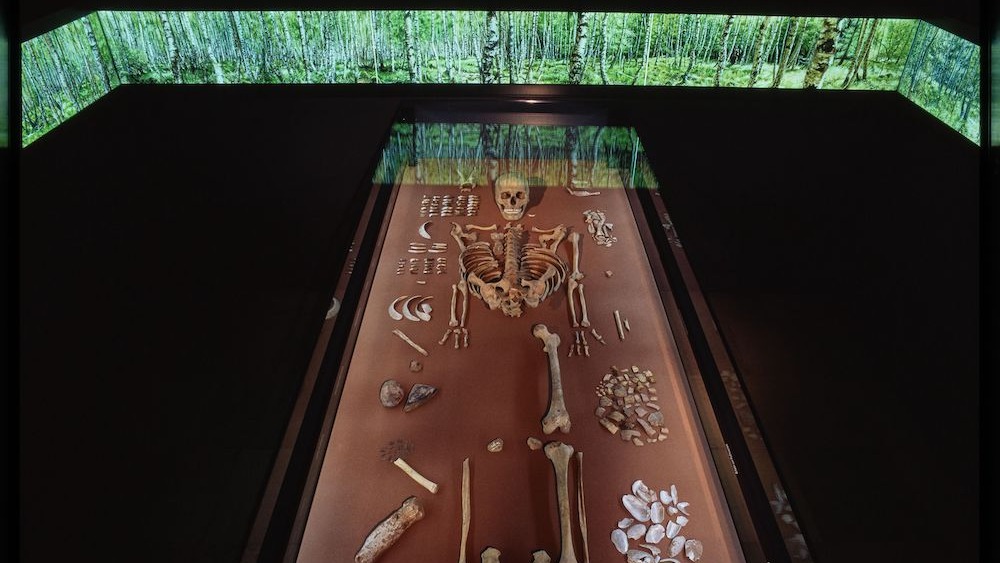
In 1934, workers in Germany discovered the double burial of a woman placed in a seated position with an infant between her legs. Because of the overabundance of grave goods surrounding the pair, archaeologists concluded that she was likely a shaman who died about 9,000 years ago, during the Mesolithic period. However, her true identity and relationship with the child have remained a mystery.
Now, new genetic research has revealed a new clue: The shaman buried in Bad Dürrenberg, a town in eastern Germany, wasn't the mother of the infant but rather a fourth- or fifth-degree relative to the boy who may have been buried decades earlier than him, according to an article published as a chapter in the conference proceedings "Propylaeum."
"We sequenced the entire genome of this woman who lived [about] 9,000 years ago," article co-author Wolfgang Haak, group leader for the Department of Archaeogenetics at the Max Planck Institute for Evolutionary Anthropology in Germany, told Live Science in an email. "The Mesolithic woman from Bad Dürrenberg carries a genetic profile that is typical of Western European hunter-gatherers, a population which — as the name suggests — occupied much of central and western Europe at the end of the Upper Paleolithic and early Holocene, so roughly after [about] 14000 [B.C.]."
The analysis revealed that the woman, who was 30 to 40 years old when she died, was of slender build and roughly 5 feet, 1 inch (1.55 meters) tall, according to a statement.
"She had darker hair and skin color than modern-day Europeans, and most likely lighter, bluish eyes," Haak said. "These features are common in Western European hunter-gatherers."
Researchers also learned that the woman had missing muscles on her lower extremities (trunk) and an "abnormally developed blood vessel" in her skull, according to the statement.
"The bone showed little or no marked muscle attachments, unlike many other human remains from the Mesolithic," said article co-author Jörg Orschiedt, an archaeology professor at Free University Berlin, told Live Science. "She was, however, far from being disabled or physically restricted in any way."
Researchers also noticed a "very rare anatomical anomaly" at the base of her skull that "can lead to a pinching of the vertebral artery when the head is in a certain position," Orschiedt said. "Although this doesn't cause unconsciousness, it can lead to mild neurological phenomena. A probable consequence is an involuntary eye flutter: a nystagmus. This appears irritating or uncanny to onlookers and has probably influenced her status as a shaman."
As for the infant, the genetic analysis concluded that they were related and were several generations apart, according to the article.
"This means that they were not mother and son as hypothesized from the burial context," Haak said. "It is possible that she was his (great-) great-great-great-grandmother in a line of generations and that the boy was added many decades later to the grave of his ancestor. It is also possible that both overlapped in their lifetime, which means she could have been a distant maternal relative (and both shared a common ancestor two to three generations ago)."
When the burial was first discovered, workers also dug up hundreds of grave goods, including flint blades, mussel shells, deer bones and wild boar tusks, according to Archaeology, a publication from the Archaeological Institute of America.
"Even though the discovery was made in the 1930s, the new research contributes a lot of new details to the find context, with a clear attribution to the Mesolithic, and paints a more detailed picture of the last European hunter-gatherer groups," Haak said.







